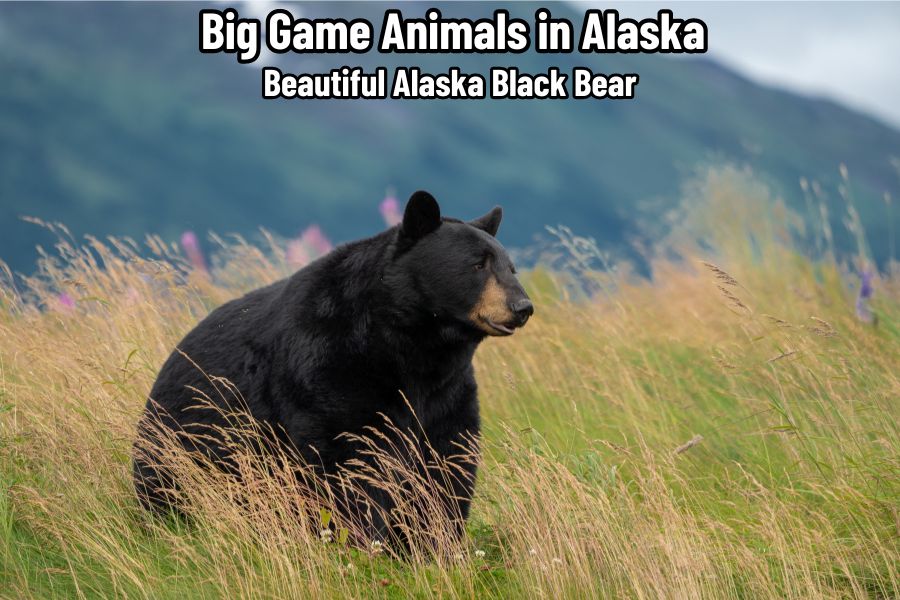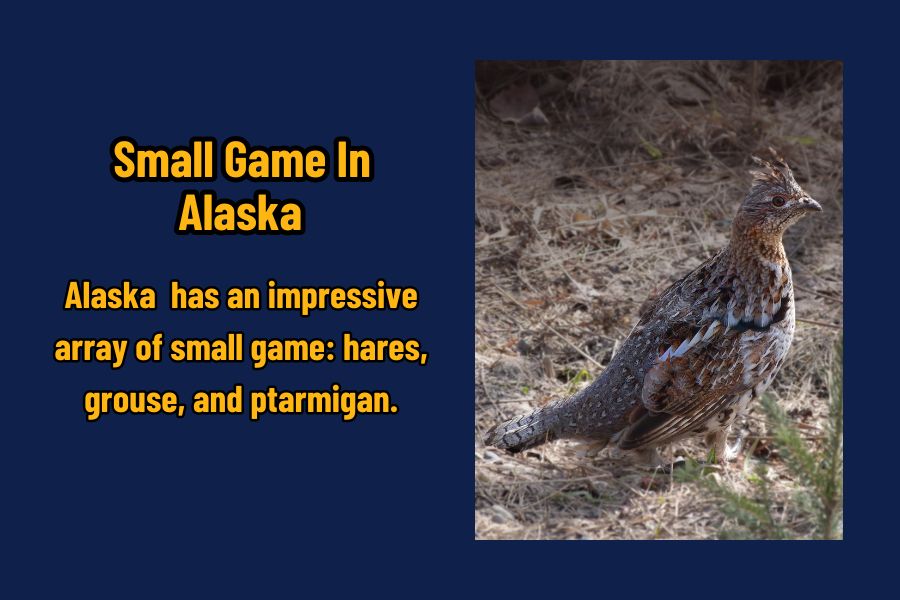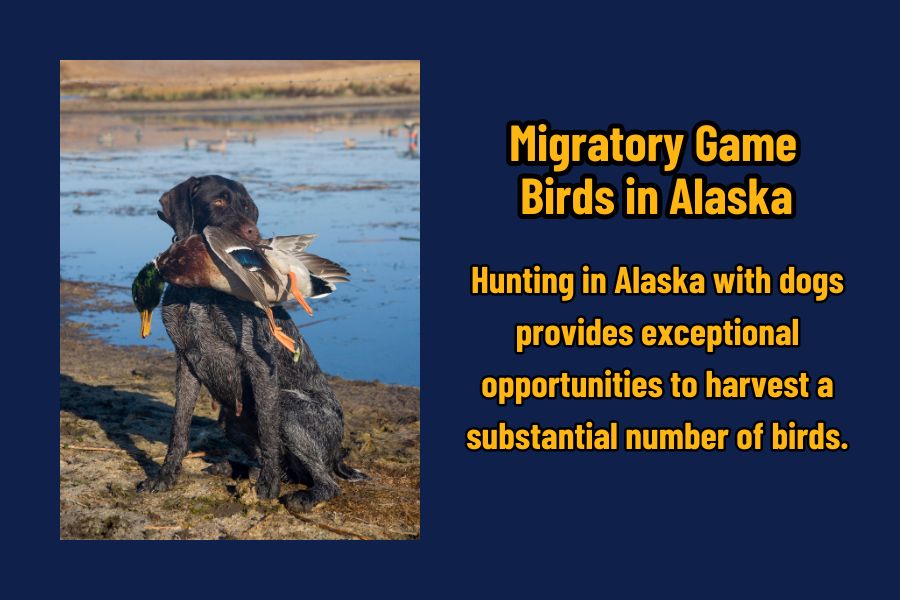Can you hunt with dogs in Alaska? This guide is full of remarkable insights about hunting with dogs in Alaska including the types of game you can pursue, some key hunting regulations, tips for planning and preparation, answers to frequently asked questions and key resource information.
Introduction: Can You Hunt with Dogs in Alaska?
Absolutely! Alaska offers a unique and thrilling opportunity to hunt with dogs, blending the state’s breathtaking landscapes and diverse wildlife with the age-old practice of partnering with your canine companion for hunting adventures. This article aims to provide an essential guide for anyone looking to embark on a journey to hunt with dogs in Alaska, covering preparations, hunting regulations, and tips to ensure a successful and memorable experience.
Whether you’re an experienced hunter or a beginner, this guide is your gateway to navigating through your next big hunt with dogs in Alaska’s beautiful wilderness.
Furbearing Animals in Alaska
Delving into the realm of furbearing animals in Alaska offers a fascinating glimpse into the state’s rich biodiversity. This section aims to shed light on the types of furbearing animals present in Alaska and the specific regulations surrounding hunting these animals with the aid of dogs.
Understanding Furbearing Animals in Alaska
Alaska is home to a diverse array of furbearing animals, each with unique habits and habitats that contribute to the complexity of the Alaskan wilderness. These animals are not only integral to the ecosystem but also hold significant value for trappers and hunters.
Furbearing animals in Alaska include species that thrive across various environments, from dense forests to icy tundras. Their fur, highly prized for its quality and warmth, has been a traditional resource for both indigenous peoples and modern hunters. Understanding these animals’ behaviors, distribution, and the ecological role is essential for anyone interested in the ethical and sustainable pursuit of hunting and trapping in Alaska.
Designated Furbearing Animals in Alaska
The Alaska Department of Fish and Game (ADF&G) categorizes several species as furbearing animals, highlighting the state’s commitment to managing and conserving these species. These designated animals include Beaver, Coyote, Arctic Fox, Red Fox, Lynx, and Squirrel. Each species plays a pivotal role in Alaska’s ecosystems, and their management is crucial for maintaining biodiversity and ecological balance.
The designation of these animals as furbearing underscores the importance of regulated hunting and trapping practices, ensuring that their populations remain healthy and sustainable for generations to come.
Can You Hunt Fur Bearing Animals In Alaska with the Aid or Use of a Dog?
When it comes to hunting furbearing animals in Alaska with the aid of dogs, the regulations set by ADF&G are quite specific. You are not allowed to hunt with dogs in Alaska for Furbearing animals “EXCEPT: coyotes in Unit 20D after registering with ADF&G”. In addition, traps, snares, nets, or fish traps are methods not allowed. These regulations also prohibit disturbing or destroying dens, hunting the same day one has been airborne unless at least 300 feet from the airplane, and hunting with a nonresident small game license.
Understanding and adhering to these regulations is crucial for hunters and trappers alike, ensuring that the pursuit of furbearing animals in Alaska is conducted responsibly and sustainably.
Big Game Animals in Alaska

In the expansive wilderness of Alaska, hunting big game offers an unparalleled adventure, drawing hunters from all around the globe. This section delves into the variety of big game species that inhabit over 365 million acres of rugged terrain, providing insights into the unique challenges and opportunities they present.
Understanding Big Game Animals In Alaska
Alaska’s big game hunting is renowned for its diversity and the vast landscapes that serve as the backdrop for these hunting expeditions. The state’s territories, spanning an area one-fifth the size of the entire United States, are home to a myriad of big game species.
These animals, adapted to the harsh and varied climates of Alaska, often undertake long migrations between their seasonal ranges, adding an element of unpredictability and excitement to the hunt.
Successful hunting in Alaska demands thorough preparation, including understanding the movement patterns of your target species, and selecting the optimal locations and times for your hunt. This deep level of engagement with the natural world sets Alaska apart as a premier destination for big game hunters.
Designated Big Game Animals In Alaska by Alaska Department Fish and Game (ADF&G)
The Alaska Department of Fish and Game (ADF&G) recognizes a comprehensive list of species as big game, including Bison, Black Bear, Brown/Grizzly Bear, Caribou, Dall Sheep, Deer, Elk, Moose, Mountain Goat, and Muskox.
These animals are not only integral to Alaska’s ecological balance but also represent the heart of big game hunting traditions in the state. Each species offers unique challenges and rewards, making Alaska a dynamic and thrilling environment for hunters seeking the ultimate big game experience.
Can You Hunt Big Game In Alaska with the Aid or Use of a Dog?
According to the regulations set forth by the ADF&G, to hunt with dogs in Alaska for big game is generally prohibited; “EXCEPT: dogs may be used to hunt black bears under a permit issued by ADF&G. A single, leashed dog may be used in conjunction with tracking and dispatching a wounded big game animal.”
These regulations are designed to ensure that the use of dogs in big game hunting is conducted in a manner that is both respectful to the wildlife and aligned with conservation efforts, ensuring the sustainability of Alaska’s big game populations for future generations.
Small Game in Alaska

Exploring how to hunt with dogs in Alaska for small game opens up a world of opportunities for hunters of all experience levels. This section aims to highlight the joys and essentials of pursuing small game in the Alaskan wilderness, from the types of animals you can expect to encounter to the unique experiences each hunt can offer.
Understanding Small Game Animals in Alaska
Small game hunting in Alaska is an excellent way to immerse oneself in the hunting tradition, especially for beginners or those introducing the younger generation to this time-honored activity. It’s accessible, affordable, and doesn’t require the extensive planning and permits associated with big game hunting.
Whether it’s guiding a young hunter to flush out hares or tracking down spruce grouse along a serene trail, small game hunting is about more than the hunt; it’s about building lasting friendships and traditions in the great outdoors. Training hunting dogs in Alaska provides countless moments of excitement as you watch your dog expertly point to a hidden grouse or ptarmigan.
Designated Small Game Animals
A small game hunt with dogs in Alaska is as rich and varied as its landscapes, boasting a variety of species that make every hunt a unique adventure. The state is home to an impressive array of small game, including hares, grouse, and ptarmigan, which are spread generously across its territories.
Hunters in Alaska can pursue four distinct species of grouse—ruffed, sharp-tailed, spruce, and sooty grouse—alongside all three of the globally recognized ptarmigan species: willow, rock, and white-tailed. Additionally, two hare species—the snowshoe and the Alaska hare—add to the diversity of Alaska’s small game population.
These native species are available for both resident and non-resident hunters, who are welcomed by generous season dates and bag limits. This abundance ensures that wherever you find yourself in Alaska, you’re likely to encounter multiple small game species, offering a rewarding and varied hunting experience.
Migratory Game Birds in Alaska

Are you thinking about planning a hunt with dogs in Alaska? This section offers an insightful look into the world of migratory game bird hunting in Alaska, detailing the species available, key hunting regulations, and essential preparations for hunters and their canine companions.
Understanding Migratory Birds In Alaska
Alaska is a premier destination for hunting migratory game birds, boasting a rich variety of species and unique hunting experiences. The state is a haven for waterfowl enthusiasts, offering diverse opportunities to hunt Ducks, Sea Ducks, Canada Geese, Emperor Geese, and Tundra Swans among others. Hunters can enjoy a range of activities, from decoying brant in Cold Bay’s eelgrass beds to jump-shooting dabblers in Minto Flats, or waiting for specklebellies in Delta’s pit blinds.
The diversity of Alaska’s hunting locales is matched only by the variety of bird species available. The state’s wetlands, both marine and freshwater, are crucial habitats that contribute to a significant fall flight, dispersing millions of ducks and geese across North America. With around 8,800 waterfowl hunters each season, hunting in Alaska with dogs provides exceptional opportunities to harvest a substantial number of birds, making it an unmatched destination for migratory bird hunting.
Designated Migratory Game Birds in Alaska
Migratory game birds in Alaska are classified as small game and encompass a wide range of waterfowl, including ducks, geese, and swans, as well as sandhill cranes and snipe. The regulation separates duck species into general ducks and sea ducks, with the former including all except for designated sea ducks. Notable among sea ducks are species like the harlequin duck, long-tailed duck, and various eiders and scoters.
Geese are categorized by size and type, including both small-bodied (Cackling) and large-bodied (Canada) geese, as well as white geese such as snow and Ross’ geese. Alaska hunting regulations and bag limits ensures the protection of Alaska’s diverse waterfowl population.
Migratory Bird Hunting Regulations in Alaska
Setting migratory bird hunting regulations in Alaska is an annual process that spans from January to September. The state is divided into 26 game management units, further grouped into 5 migratory bird hunting zones for regulatory purposes. Hunters must first identify the game management unit they plan to hunt in and acquaint themselves with the corresponding zone’s regulations and shooting times.
It’s essential to have the proper stamps and licenses, and hunters should be aware that migratory birds may be banded for research purposes. Such birds are legal to hunt, but hunters must report any banded birds they harvest to the Alaska Department of Fish and Game or the USFWS. For beginners and non-residents, you may want to consider an Alaska Migratory Bird Hunting Guide, a great option for your first hunt.
Preseason Preparation for Hunter and Dogs
Preparing for a hunt with dogs in Alaska for waterfowl demands thorough preparation and the right gear. Preseason efforts, like refurbishing decoys and ensuring boats and motors are in working order, can make a significant difference on opening day. Practicing with trap or skeet shooting can sharpen shooting skills, and working with a well-trained retriever can minimize the loss of crippled birds.
Preparing dogs for Alaska’s dense waterside vegetation is crucial for effective retrieval. Knowledge of the targeted bird species is paramount to avoid violations and consequences of hunting non-target or illegal species.
Other Important Factors to Consider
When planning to hunt with dogs in Alaska, there are several critical factors beyond the basic hunting regulations that every hunter must consider. These include understanding your responsibilities and following ethical hunting practices, ensuring safety, and minimizing your environmental impact.
Each of these aspects plays a vital role in ensuring that the rich hunting traditions of Alaska can continue for future generations. Always keep in mind, every hunt with dogs in Alaska is a privilege that comes with significant responsibilities.
Conclusion
Can you hunt with dogs in Alaska? By now you should know, the answer is a resounding YES! Alaska dog hunting is an adventure that combines the thrill of the hunt with the breathtaking beauty of some of the most pristine wilderness areas in the world. Throughout this blog post, we’ve covered essential topics from understanding the diverse wildlife, including big game, furbearing animals, small game, and migratory birds, to navigating some key regulations that govern hunting with dogs in Alaska.
We’ve aimed to provide a comprehensive guide to ensure your hunting experience is both successful and respectful of the natural environment. The importance of preparation, including training and equipping both yourself and your dogs for the unique challenges of Alaskan hunting, cannot be overstated.
Moreover, adhering to ethical hunting practices, understanding and following local regulations, ensuring safety at all times, and minimizing your environmental footprint are not just recommendations; they are essential components of hunting with dogs in Alaska. By embracing these principles, hunters can contribute to the conservation of Alaska’s incredible wildlife and habitats, ensuring that they remain vibrant and accessible for generations to come.
Start planning your next hunt with dogs in Alaska, an unparalleled opportunity to connect with nature and create unforgettable memories hunting game with dogs in Alaska.
FAQs – Hunt with Dogs in Alaska
To hunt with dogs in Alaska, what are the rules for big game?
Hunt with Dogs in Alaska Answer:
In Alaska, the general rule prohibits the use of dogs for hunting big game. However, there are exceptions, such as the use of dogs to hunt black bears under specific conditions and with a permit issued by the Alaska Department of Fish and Game (ADF&G). Additionally, a single, leashed dog may be employed to track and dispatch a wounded big game animal to ensure a humane outcome.
Can you hunt with dogs in Alaska for furbearing animals?
Hunt with Dogs in Answer Answer:
Hunting furbearing animals with dogs in Alaska is subject to strict regulations. Generally, methods such as dogs, traps, snares, nets, or fish traps are not allowed for taking furbearing animals under hunting regulations, with specific exceptions like hunting coyotes in Unit 20D after registering with ADF&G. Understanding these regulations is essential for conducting responsible and sustainable hunting.
Are there specific seasons for hunting with dogs in Alaska?
Hunt with Dogs in Alaska Answer:
Yes, hunting seasons in Alaska vary depending on the game species and the region. It’s essential for hunters to consult the Alaska Department of Fish and Game for the most current season dates and regulations specific to the area they plan to hunt. This ensures that hunting activities are aligned with conservation goals and legal requirements.
How does a hunter obtain a permit to hunt with dogs in Alaska?
Hunt with Dogs in Alaska Answer:
To hunt with dogs in Alaska, especially in cases where it’s required like hunting black bears, hunters must obtain the appropriate permits from the Alaska Department of Fish and Game. This involves submitting an application that includes details about the hunt, such as the location, type of game being pursued, and information on the dogs being used. Hunters may also need to complete a hunter education course if they haven’t already. It’s crucial to start this process well in advance of your planned hunting trip to ensure all necessary permits and documentation are in order.
What types of migratory game birds can you hunt with dogs in Alaska?
In Alaska, hunters with dogs can pursue a variety of migratory game birds, including ducks, geese, swans, sandhill cranes, and snipe. This makes Alaska a great destination for waterfowl enthusiasts. Tundra swans and sandhill cranes are also popular. Dogs can help retrieve downed birds and flush out game, enhancing the hunting experience.
What types of small game can you hunt with dogs in Alaska?
Hunt with Dogs in Alaska Answer:
In Alaska, hunters and their canine companions can pursue a variety of small game species, including but not limited to hares, grouse (ruffed, sharp-tailed, spruce, and sooty), and all three species of ptarmigan (willow, rock, and white-tailed). The availability of these species varies across the state, offering hunters diverse opportunities to engage in small game hunting alongside their dogs. Always check current regulations and seasons with the Alaska Department of Fish and Game before heading out.
Resource Section
This guide aims to serve as a foundational resource for understanding how to engage in hunting with dogs across the varied landscapes of Alaska. We endeavor to provide information that is both comprehensive and informative. However, it’s important to acknowledge that hunting regulations, permissible seasons, and the legalities surrounding hunting practices are subject to change.
Therefore, the specifics mentioned herein may not always reflect the most current standards or regulations. To ensure that your hunting activities are conducted in compliance with the latest laws and to guarantee the most rewarding experience, we recommend consulting additional, up-to-date resources. The State of Alaska provides extensive resources tailored to assist hunters in navigating the legal and practical aspects of hunting in this magnificent wilderness.
Hunting Laws and Regulations
For detailed information on hunting laws, regulations, species, and opportunities for hunting with dogs in Alaska, please refer to the following resources provided by the Alaska Department of Fish and Game:
- Alaska Department of Fish and Game – Hunting, Trapping and Shooting
- Alaska Department of Fish and Game – Alaska Hunting Regulations
- Alaska Department of Fish and Game – Alaska’s Game Species
- Alaska Department of Fish and Game – Waterfowl Hunting in Alaska
- Alaska Department of Fish and Game – Small Game Hunting in Alaska
- Alaska Department of Fish and Game – Waterfowl Guide Registrations
- Alaska Department of Fish and Game – 2023-2024 Alaska Hunting Regulations
- Alaska Department of Fish and Game – 2023-2024 Migratory Game Bird Hunting Regulations
Check out our post: Can You Hunt with Dogs in Alabama?


